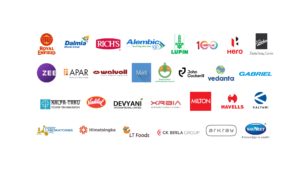SAP U15 Implementation Best Practices : SAP U15 is the latest version of SAP’s user interface development toolkit. It is a powerful tool that can be used to create modern, responsive web applications that are easy to use and maintain. It is based on open web standards such as HTML5, JavaScript, and CSS, making it a future-proof technology.
SAP U15 offers a wide range of features that make it a versatile and powerful tool for developing web applications. These features include:
- A rich set of UI controls that can be used to create interactive and visually appealing applications
- A powerful data binding engine that allows data to be easily displayed and manipulated in the UI
- A flexible and extensible architecture that makes it easy to customize and extend SAP U15 applications
- A robust set of development tools that make it easy to create and debug SAP U15 applications
This blog post will discuss some best practices for implementing SAP U15. These practices will help you to create a successful SAP U15 project.
- Plan your project carefully. Before you start implementing, it is important to carefully plan your project. This includes defining your requirements, identifying the stakeholders, and creating a timeline and budget.
- Use a framework. There are a number of frameworks available for SAP U15. Using a framework can help you to save time and code.
- Test your applications thoroughly. It is important to test your U15 applications thoroughly before you deploy them to production. This will help you to identify and fix any problems.
- Document your code. It is important to document your code so that other developers can understand it. This will make it easier to maintain and update your applications in the future.
- Get help from experts. If you are not familiar with U15, it is a good idea to get help from experts. There are a number of companies that offer SAP U15 training and consulting services.
Conclusion:
By following these best practices, you can increase your chances of success when implementing SAP U15.
Here are some additional tips for implementing:
- Use a version control system to track your changes.
- Use a continuous integration and continuous delivery (CI/CD) pipeline to automate your testing and deployment process.
- Also use a monitoring system to track the performance of your applications.
- Keep your applications up to date with the latest security patches.
By following these tips, you can ensure that your SAP U15 applications are secure, reliable, and up to date.


 RECOGNISED WORLD OVER SOLUTIONS
RECOGNISED WORLD OVER SOLUTIONS
 Find out how BSC GLOBAL digitally transformed P2P cycle for worlds renowned brand in Automobile
Find out how BSC GLOBAL digitally transformed P2P cycle for worlds renowned brand in Automobile









